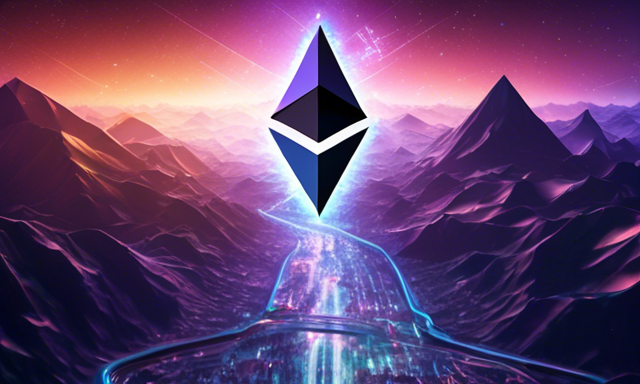TLDR
- Vitalik Buterin presents a plan for cross-chain interoperability between Ethereum layer-2 networks
- The plan includes Ethereum Improvement Proposals (EIPs) to enhance cross-L2 compatibility
- Key proposals include a new address standard, cross-L2 communication, and off-chain data access
- Buterin predicts a transition to zero-knowledge technology for all rollups in over 5 years
- VanEck foresees Ethereum L2 scaling networks reaching a $1 trillion market cap in six years
Ethereum co-founder Vitalik Buterin has introduced a detailed plan to tackle a significant challenge in the cryptocurrency ecosystem: achieving cross-chain interoperability among Ethereum layer-2 (L2) networks.
On social media platform X, Buterin outlined his vision for a seamless user experience throughout the entire “Ethereum-verse,” emphasizing various proposals and technological advancements that could make this vision a reality.
Cross-L2 roadmap in one tweet:
* 3770 (cross-L2 addrs)
* 7683 (cross-L2 sends via liquidity providers)
* 3668 (L2 light clients)
* Cross-L2-replayable account state updatesThe above is enough already. Later, phase 2:
* L1sload/staticcall
* Keystore rollups
* Proof aggregation— vitalik.eth (@VitalikButerin) August 5, 2024
Buterin’s roadmap focuses on Ethereum Improvement Proposals (EIPs) intended to improve cross-L2 compatibility. One key proposal is EIP-3370, which introduces a new address standard.
This standard would mandate wallets and decentralized applications (dApps) to display chain-specific addresses with human-readable prefixes, simplifying the user interface and reducing errors when interacting with different L2 networks.
Another critical aspect of the plan is EIP-7683, which seeks to establish a standard communication protocol for various Ethereum L2 networks. This proposal addresses current inefficiencies and complexities users encounter when trading assets across different chains, aiming to streamline inter-chain transactions for more efficient asset movement.
EIP-3668 is also part of the agenda, proposing a standardized method for Ethereum smart contracts to access off-chain data. Termed “layer-2 light clients” by Buterin, this method would make it easier and cost-effective for developers to build applications requiring substantial data without incurring high on-chain storage costs.
In addition, Buterin discussed the concept of “cross-L2-replayable account state updates,” previously detailed in a 2023 blog post. This approach allows L2 networks to receive recent layer-1 (L1) state updates while ensuring security and low latency, further enhancing interoperability within the Ethereum ecosystem’s different layers.
Looking forward, Buterin mentioned several phase 2 updates to enhance cross-chain L2 compatibility, including keystore rollups and proof aggregation. He highlighted that the initial “stage 1” updates are technology-agnostic, indicating broader applicability across various L2 solutions.
Regarding the future of existing zero-knowledge (zk) and optimistic rollups, Buterin predicted a transition to zk technology for all rollups to finalize transactions to Ethereum once per slot. However, he estimated that this transition would take more than five years to fully realize.
Investor VanEck shares Buterin’s optimism about addressing cross-L2 interoperability challenges. Earlier this year, VanEck forecasted that Ethereum L2 scaling networks could achieve a $1 trillion market capitalization within six years, highlighting the significant potential of Buterin’s cross-chain interoperability vision.
Despite his enthusiasm, Buterin recently raised concerns about overly complex Layer 2 scaling solutions, outlining the potential risks associated with intricate L2 networks.
He advocated for a balanced approach in blockchain ecosystem development, aligning with the prevailing belief in the blockchain community that Layer 1 networks should prioritize simplicity to minimize critical bug and attack vector risks.
Hot Take
Vitalik Buterin’s visionary plan for Ethereum L2 cross-chain interoperability presents exciting possibilities for streamlining interactions across different layer-2 networks.
The proposed Ethereum Improvement Proposals (EIPs) and technological advancements signify a groundbreaking step towards enhancing user experience and efficiency within the Ethereum ecosystem.
Sources:
– VanEck prediction





 By
By
 By
By

 By
By
